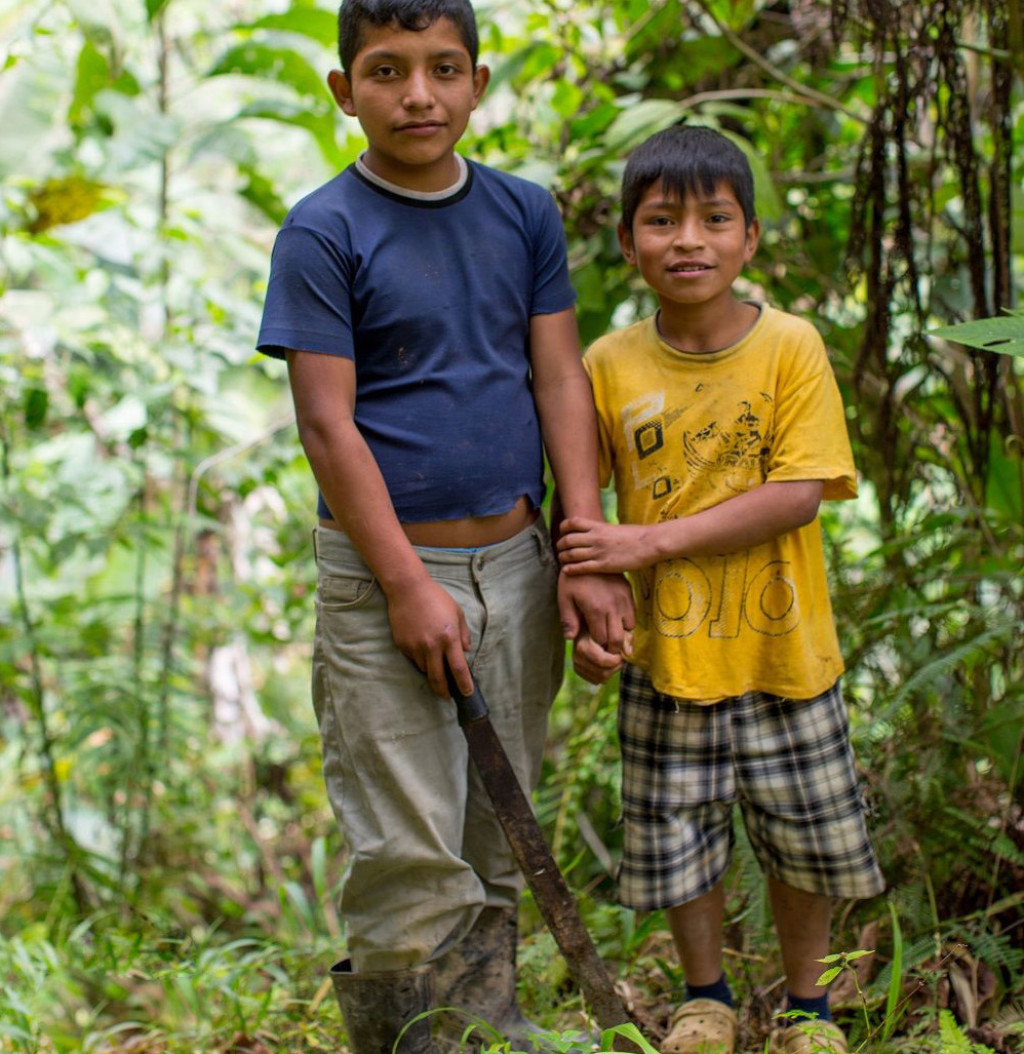Cardemom from Guatemala
 Why this case study?
Why this case study?
Child labour in cardamom production in Guatemala is mentioned in several documents. Several international NGOs also stressed prevalence of child labour in this sector is very likely.
Approach case study
- Conducted by Heifer International.
- The research was conducted in ten municipalities of the two departments that produce 82% of cardamom production in Guatemala: Alta Verapaz (68%) and Quiché (14%). The department of Alta Verapaz also stands out for having the highest rate of child labour in Guatemala. Interviews and focus group discussions were held with local governments, NGOs , entrepreneurs in the cardamom supply chain, community leaders, cardamom farmers and children. In addition, field observations during the cardamom harvesting seasons took place.
Scale, scope and severity of child labour
It is generally confirmed by all parties that child labour occurs in cardamom production (not in processing). It is specifically related to the harvest period, from September to March. Sometimes children are also involved in clearing and maintenance of the plot, pruning, the loading of cardamom fruits from the plot to the community collection point and selection of cardamom.
- The children work in the family plot, together with the family, and in some cases they accompany their parents in farms or in other plots, when the parents travel to work as day labourers. In general these children don’t get any remuneration. Children of small producers are involved from an early age (sometimes starting at 7 years old, average at 10 years old). There are also cases of work of paid adolescents (15 - 17 years old) on farms: they are self-employed as day labourers.
- The children may be exposed to hot and humid weather conditions, insects and snakes bites, dust, heavy work (e.g. carrying of sacks), long working days and accidents (e.g. some work with machetes). In addition, child labour may be a trigger for early school drop-out. However, with the exception of reduced school attendance, these risks are generally not recognised by the parents, the children themselves and several other local stakeholders.
- There is a gender division of work between boys and girls, who both participate in the cardamom production, but in a different manner: boys are able to perform various tasks, from cleaning and pruning to harvesting and carrying the cardamom sacks, while girls harvest and bring food to the workers in the plot.
- The following root causes for child labour are identified:
-
Socio-economic factors. The perception of stakeholders is that child labour originates in the conditions of poverty and extreme poverty in which most of the families of the area live. Families are looking for ways to increase their income by reducing production costs, and therefore, they turn to the labour of children.
-
Legal / political factors. The almost absence of government entities exercising a role of monitoring, prevention and eradication of child labour, evidences that the State is not coordinating any specific measures focused on child labour, despite being prohibited by law. In Alta Verapaz, the departmental delegation of the Ministry of Labour lacks personnel, financial resources and knowledge about the subject, to fulfil its mandate.
-
Cultural factors. Child labour, especially during the harvest season of coffee, cardamom, cocoa, and other crops, is a widespread practice rooted in the families of small producers in general. Several stakeholders consider child labour as something normal that commonly happens. It seems that families don’t consider child labour harmful, but on the contrary, they value it as something positive, which contributes to the family’s economy and trains their children. This is the main reason why the awareness of the severity of child labour is so weak, despite the number of children involved, the conditions and consequences. Changing these cultural patterns will be one of the main challenges of the actions to be implemented to address the problem.
-
Other factors. Another factor that influences the involvement of children are their physical characteristics (size and motorial skills), which facilitate cutting the cardamom, since the fruit is located in the lower part of the plant. Dysfunction in local schools (absenteeism of teachers, lack of basic equipment, low quality educational content) is another factor that encourages children and their parents to prefer the harvest to school.
-
Proposed measures to reduce child labour risks
Heifer International recommends implementing a series of measures aimed at four specific objectives:
- Close the income gap of cardamom smallholder famers families, increasing productivity and quality of production, diversifying income and improving their inclusion in the cardamom value chain. Specifically for example through the creation and development of an agroforestry system productive model, linked with dryers owned by cooperatives and buyers guided by corporate social responsibility.
- Replace the culture favourable to child labour with a culture favourable to education and the rights of children: Raising awareness on education, rights of the child and consequences of child labour, among children, teachers, parents and decision-makers at local level.
- Strengthen public entities that address child labour at the departmental level to improve their capacities for monitoring and inter-institutional coordination.
- Create awareness and commitments among the main actors of the cardamom value chain on corporate social responsibility.
It is recommended to implement these measures as a pilot project, on a small area (like a micro region), with public-private partnerships (NGOs, private sector and government institutions), to leverage the objectives.
